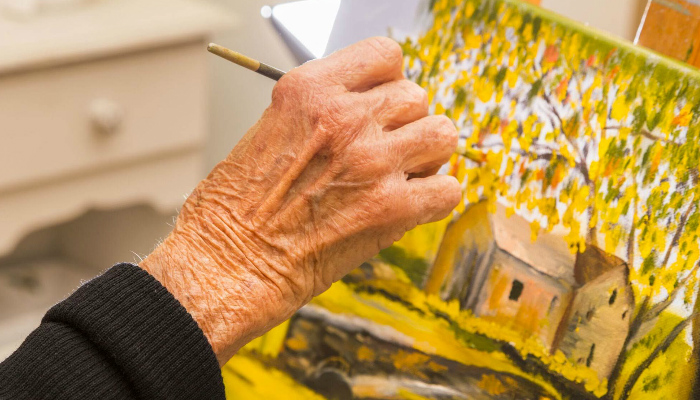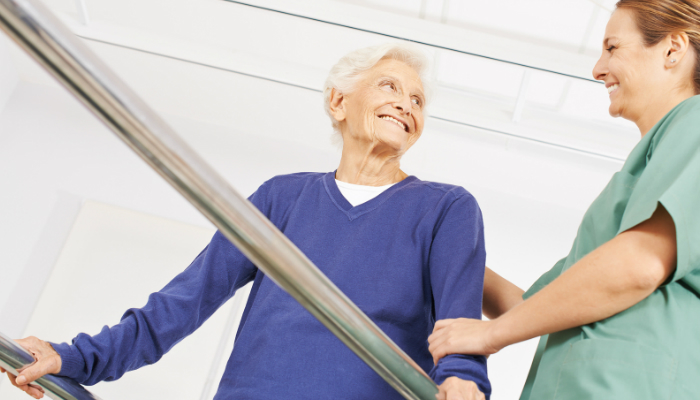
Effective communication is the cornerstone of care that is patient-centric. This is particularly true in the context of elders. Normally, in Senior Care, caretakers focus on the Verbal Communication protocols and standards. However, most communication in our daily life happens non-verbally. So, it is crucial that Non-Verbal Communication (NVC) aspects are also tackled with due attention. NVC can be utilized for improving the caretaker’s ability to relate, engage and establish meaningful interactions with elders.
The Need of NVC for Assisted Living (AL)
Assisted Living (AL) is a rewarding Senior Care option. Elders live independently in specially designed homes with adequate facilities and can seek the support of caretakers whenever required. Assisted Living facilities become second homes to elders (residents). The caretakers thereby take on the role of family members. So, it is very important to ensure that elderly care is executed with empathy to make them feel loved and wanted. For this, the ability to understand and use NVC acts as a powerful tool. This not only maintains a friendly and healthy rapport between the residents and caretakers but also reinforces mutual understanding and respect. Additionally, elders with health issues like dementia have verbal communication difficulties leading to frustration. So instead of talking, non- verbal cues could aid in better communication.
AL caretakers must have a strong situational awareness of NVC when handling elders. This helps them in recognizing potentially problematic body language and consciously changing it for better care delivery. It also helps elders to better understand and anticipate the caretaker’s next move. Besides, a good amount of preparation can help control and direct non-verbal behaviors. Adopting such an approach reduces the stress of AL residents making it easy for conveying their wants and dislikes without inhibitions.
Caretaker Strategies for Promoting NVC to Foster Empathetic Relationships
- Ensure that you are smiling and maintaining proper appropriate eye contact while communicating.
- Pay good attention to what the elders are saying instead of showing disinterest by looking elsewhere, yawning or demonstrating any action that implies boredom.
- Sit down while discussing rather than standing. This shows your sympathy towards the seniors rather than displaying paternalistic stance.
- Nod the head in affirmation to display that you are indeed listening.
- Avoid biased approaches and judgmental attitudes during interactions. This encourages seniors to share complete and relevant information about their anxieties.
Various Types of NVC
- Appearance: Since first impressions always count, it is good to be presentable in both social and working environments. This instills confidence to listeners leading to adherence to the given commands.
- Maintaining good eye contact: Having a face-to-face communication indicates that the caretaker is genuinely interested and listening with full attention devoid of any distractions. However, it should not be misconstrued as staring.
- Gestures: Appropriate gestures add substantial clarity and character to speak. It enables the speaker to further define the topic in conversation and makes it easier for the receiver to comprehend it. Gestures are particularly useful when there are significant language barriers. They may also be used independently for communicating without speech.
- Posture: This is the stand that is portrayed during a conversation. It is important to be in a comfortable posture while sitting, standing or walking. Rather than showing disinterest, leaning forward helps to show interest, concern and attentiveness to the concerns and sorrows being conveyed. Spatial awareness is equally crucial. One must ensure not to intrude into other’s personal space.
- Touch: The touch action comes to play only when the need arises. During an interaction, making a touch, pat or a gentle hug reinstates a feeling of concern and empathy.
- Facial expression: Facial expressions are voluntary and must be used wisely during consultations. It must not be over-animated as it leads to distraction in conveying the intended message and gives false hints.
- Humor: Laughing and making light jokes can create better bonding by reducing stress.
- Visual Clues: Written messages and use of objects and pictures can help alleviate a communication breakdown.
- Expression: Allowing the person to express their feelings by merely listening also fosters good communication.
- Tone: Speaking in low, gentle yet firm tone shows sympathy and instills confidence in the listener.




